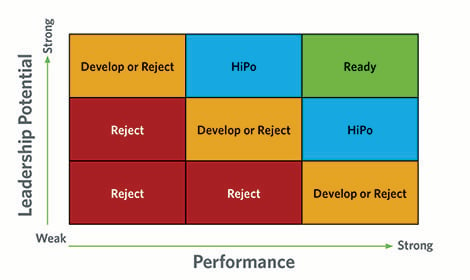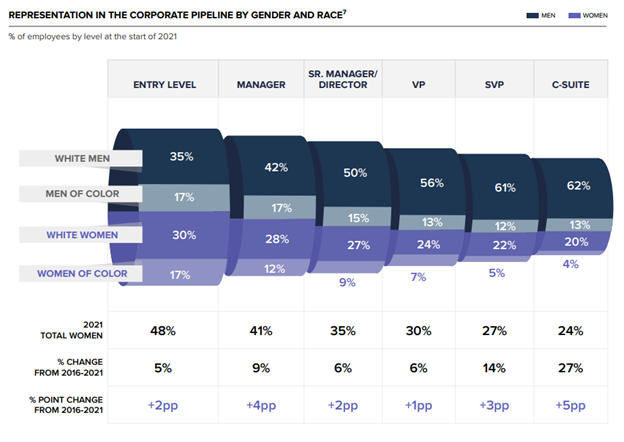Mentorship and Succession Planning: Perfect Partners
Business leaders often talk about the importance of succession planning and developing “bench strength” when discussing the future of their...
4 min read
 Joseph Marth PhD
:
Oct 6, 2022 9:44:34 AM
Joseph Marth PhD
:
Oct 6, 2022 9:44:34 AM

Did you know that we are living through a time of great workforce upheavals? There are some significant forces underway that employers should not ignore.
First, most of the Baby Boomers generation are either retired or about to retire, with about 75 million Boomers estimated to exit the workforce by 2030. Gen X’ers and Gen Y’ers are increasingly taking over leadership positions in organizations, with Gen Z expected to make up 25% of the workforce by 2025.
Second, the COVID-19 pandemic has accelerated the retirement of some workers and stimulated a mass transition of other workers to new employers and roles—otherwise known as the phenomenon, “The Great Resignation”.
Third, unemployment is at a record low and there are labor shortages in many industries. So it is more important than ever for organizations to start planning for the exiting of leaders and other critical talent in key roles. This is where succession planning and management come into play.
Gartner, the national management consulting firm, states, “Succession planning and management includes programs and practices that proactively manage workforce-related risks. It is an integral part of the strategic workforce planning process. It focuses on identifying and developing a pool of leaders and critical talent ready to fill key roles across all organizational levels, closely aligned with long-term organizational goals and objectives.” Succession planning entails four processes:
Succession management entails actively managing the four processes mentioned above.
There are three main approaches to succession planning and management: the Unstructured Approach, the Traditional Semi-Structured Approach, and the Competency-based Structured Approach.
In the Unstructured Approach, the human resources department or senior leaders recognize the need for succession management for certain positions and informally identify high potential (HiPo) internal candidates for the positions. This list of HiPos may or may not be formalized, the HiPos themselves may or may not know they are in the running to succeed an organizational leader, and most likely the HiPos do not undergo any kind of assessment of their fitness or readiness for their potential future roles.
With the Traditional Semi-Structured Approach, the human resources department creates a candidate map for senior leaders to use to identify HiPos and to assess HiPos’ fitness for their potential future roles informally. HiPos may or may not know they are in the running to succeed an organizational leader. Nine Cell Maps are a common manifestation of this approach:

With the Competency-based Structured Approach, the human resources department creates “Realistic Job Profiles” for the key succession roles. They do this by working with the current role incumbents and other individuals who regularly work with them in the performance of these jobs. The Realist Job Profiles (RJPs) identify the competencies needed to be successful in the role, the levels of responsibility (e.g., supervision, budgeting, decision making, etc.), time and effort commitments, and any factors that could cause an individual to fail in the role. HiPos are then identified and asked about their interest in participating in the succession planning program. If they choose to participate, they may be assigned a mentor (oftentimes the role incumbent) and asked to self-evaluate using the RJP. With the assistance of their mentor/role incumbent, they would identify gaps between where they are today and what is required to succeed in the future role. Based on this gap analysis, the HiPo would then create a professional development plan with specific development objectives and timelines.
Recruitment and selection are very susceptible to the influences of unconscious bias. According to Rebecca Knight of the Harvard Business Review, a “vast body of research shows that the hiring process is biased and unfair. Unconscious racism, ageism, and sexism play a big role in who gets hired.” This is similarly true in succession management. Of the three approaches to succession management and planning discussed above, both the Unstructured Approach and the Traditional Semi-Structured Approach are most susceptible to unconscious bias. Even when managers and HR teams receive training on unconscious bias, it can reassert its influence in these two approaches as there is no mechanism for a more objective-based readiness assessment. These approaches also are likely to ignore opportunities to develop diverse HiPo candidates in the organization. However, the third approach (the Competency-based Structured approach) can consciously and transparently assess readiness. There is also the opportunity to identify diverse HiPo candidates with a structure to mentor their advancement in the organization.
Another way that succession management and planning can negatively impact diversity, equity, and inclusion (DEI) is that it perpetuates advancing non-diverse management talent to senior leadership levels. McKinsey and Company’s 2021 Women in the Workplace Report demonstrates this occurrence today:

McKinsey comments, “Women’s representation has increased across the pipeline since 2016. However, women—especially women of color—remain significantly underrepresented in leadership.” This inequity continues to persevere even though research has consistently shown that a lack of diversity in leadership in an organization is associated with poorer decision-making, poorer financial performance, and lower levels of innovation.
For organizations that are implementing a succession planning and management program and that are also committed to DEI, they will want to do the following:
The last recommendation highlights an approach where an organization not only considers internal high-potential candidates (identified through succession planning) but also opens the selection process to external high-potential diverse applicants. The organization should assess all candidates using the same competency-based approach.
In conclusion, current workplace forces make succession planning an organizational imperative today. There is also an opportunity to implement succession planning in a way that advances DEI in your organization—which sounds like a winning combination.
Want help getting started? Archbright offers succession planning services. Also, members have access to resources in mozzo, which includes a Succession Planning Worksheet. Contact us at info@archbright.com.

Business leaders often talk about the importance of succession planning and developing “bench strength” when discussing the future of their...

Being the sole HR professional in any organization is unique and challenging. An “HR Department of One” is responsible for the full spectrum of HR...

Note: To respect differing preferences, this article uses both person-first and identity-first language.